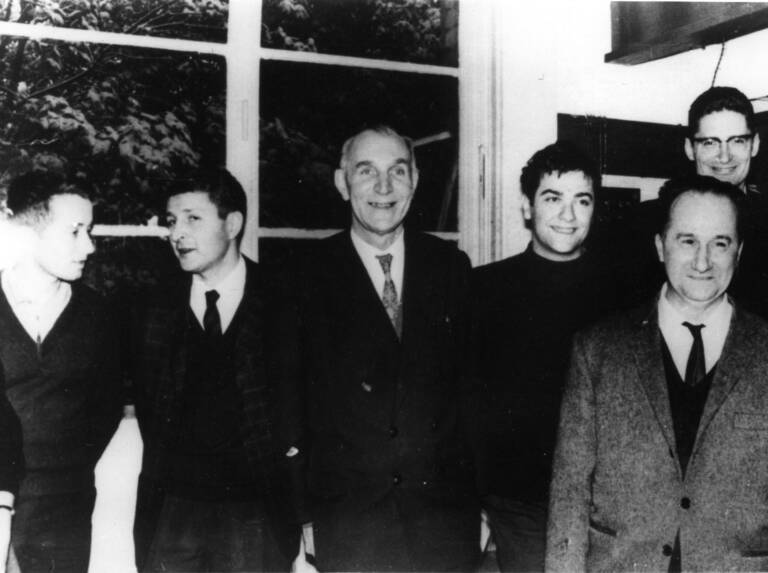The first PhD students

In the autumn of 1953, Jacques Blamont returned to the laboratory to work on his thesis. He had previously begun, as a “diplomitif,” with twilight photometry of sodium, a topic aligned with the early phase of Kastler’s career but one that would later lead Blamont down very different paths. He was assigned one of the first announced applications of double resonance: studying the Stark effect in the excited state of mercury (the modification of atomic energy levels under a strong electric field). The 50kV power supply required to create this electric field caused many difficulties, often producing fatal discharges for his mercury vapor cells. However, this did not delay his thèse d’état, which he defended in 1956. Afterward, he returned to his early research interests by releasing clouds of sodium into the upper atmosphere using France’s first rockets at Colomb-Béchar, marking a shift in his scientific trajectory toward space research.
At the beginning of 1955, Jacques Winter returned as a doctoral student, accompanied by a peer: Jean-Claude Pebay-Peyroula. Winter resumed work on the theoretical problem of multiple-quantum transitions, in which the atom simultaneously absorbs several radiofrequency photons. He identified two distinct types of these transitions and experimentally verified their predicted properties. His initial experiments were conducted on the atomic beam, but the complex line shapes observed made interpretation difficult, leading to the replacement of the beam with a new setup using a vapor cell. After completing his thesis in 1958, he joined Anatole Abragam’s group at the C.E.N. in Saclay and later ended his career as the head of a department at the C.E.N. in Grenoble, following a stint in the scientific direction of the CNRS. Notably, the relationship with the Abragam group, which began in the basement on rue Lhomond where Abragam was temporarily hosted by Y. Rocard, continued after Abragam’s group relocated to its own facilities at C.E.N. Saclay. Memories remain of Kastler driving several of his doctoral students weekly to Saclay to attend Abragam’s lectures.
Meanwhile, J.C. Pebay-Peyroula attempted to develop one of the ideas proposed in the 1949 article: the excitation of atoms through directional electron bombardment with parallel velocity vectors creates anisotropy among the excited sub-levels, favoring specific orientations of the atomic angular momentum, similar to the effect of directional, polarized light irradiation. This allows for extending the same studies to many levels that cannot be optically excited. Developing electronic tubes suitable for these experiments was challenging, but ultimately yielded numerous results. After defending his thesis in 1959, Pebay-Peyroula brought this technique to the University of Grenoble, where he became the director of the prominent Laboratory of Physical Spectrometry.
